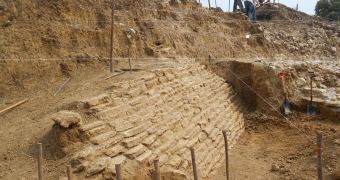A settlement estimated to be roughly 2,000 years old has recently been discovered in eastern Mexico, close to the city of Veracruz.
Information released by the country's National Anthropology and History Institute says that the settlement was first uncovered by construction workers.
Archaeologists arrived at the site later on. Once there, they did not take long to dig out 30 skeletons and the remains of an ancient pyramid.
The pyramid sits on a hill, close to the final resting place of these 30 people. It measures about 39 feet (12 meters) in height, and its style appears to be either Mayan or Tajin.
Investigations carried out thus far have revealed that 2 of the 30 people found buried at this location were mere children at the time of their death.
“All that is known so far is that of the 30 burials, two at least belong to infants,” reads a statement issued by Mexico's National Anthropology and History Institute.
Scientists expect that they will know more about this group of individuals once they get the chance to thoroughly examine their skeletons. Live Science informs us that figurines made from clay, mirrors, beads and animal remains were discovered scattered across this ancient settlement.
Most of the animal remains were unearthed from inside the 30 graves in the pyramid's proximity, and appear to belong to dogs, fish, birds, coyotes and the like.
It is likely that these animals were placed inside the graves so that they might accompany the deceased individuals in the underworld, and keep them company.
Oddly enough, researchers also came across fossilized teeth belonging to a long-lost species of Megalodon-like shark.
This discovery suggests that the people who built this settlement enjoyed collecting various artifacts, the same source details.
The artifacts dug out by archaeologists appear to have different origins, hence the experts' belief that they are dealing with the remains of a multicultural community.
“Analyses will enable us to see whether this site was multicultural, as is indicated by the materials found, or whether the inhabitants were all of the same genetic type,” the National Anthropology and History Institute stresses.

 14 DAY TRIAL //
14 DAY TRIAL //